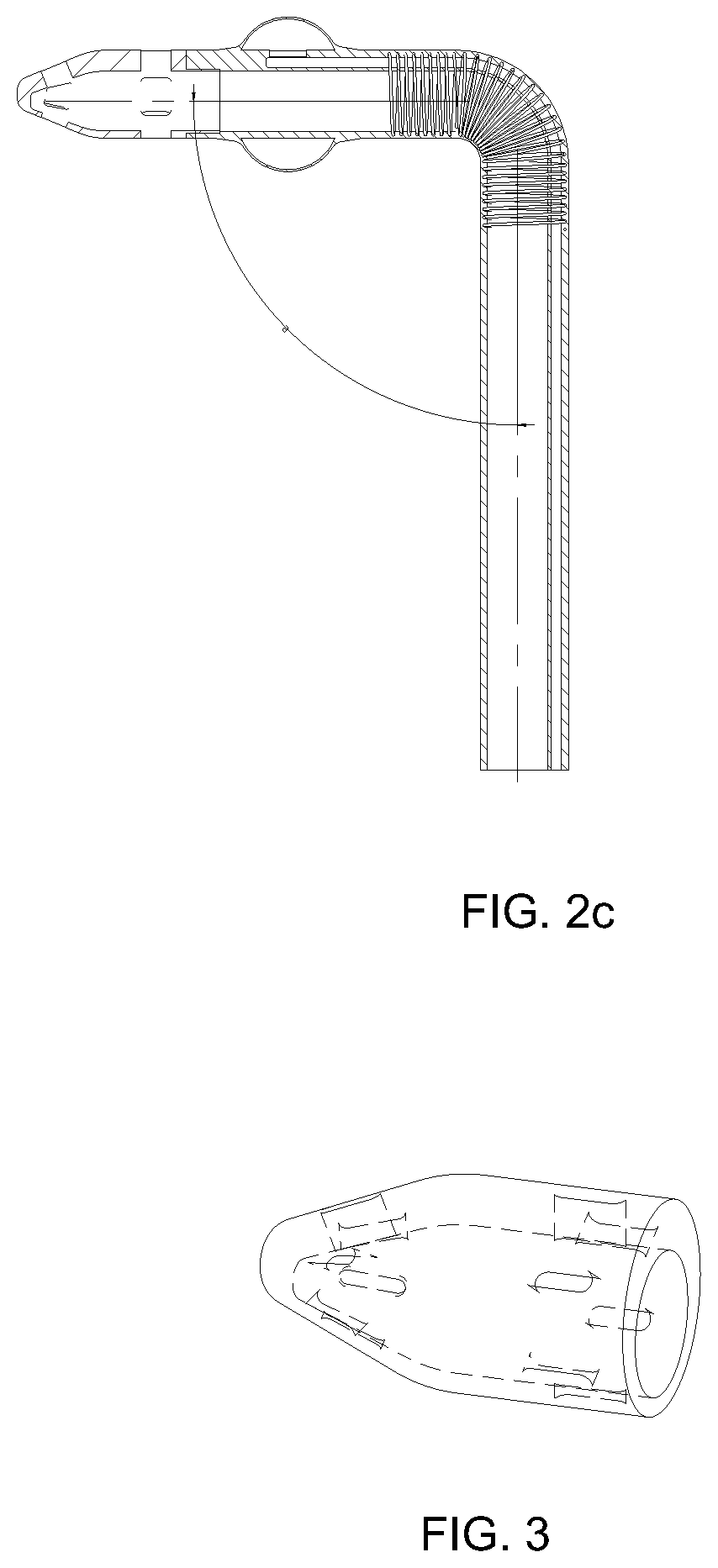Cannula for percutaneous minimally invasive cannulation of the vena cava
a cannula and vena cava technology, applied in the field of cannulas for percutaneous minimally invasive cannulation of the vena cava, can solve the problems of difficult or even impossible minimally invasive surgery, and achieve the effects of reducing the time to prepare the surgical region for surgery, convenient for the operator, and tight protection
- Summary
- Abstract
- Description
- Claims
- Application Information
AI Technical Summary
Benefits of technology
Problems solved by technology
Method used
Image
Examples
first embodiment
[0039]In the first embodiment shown in FIG. 1, the cannula is a flexible tube 1 made of plastic having three longitudinal chambers, a main chamber 1a, a first lateral chamber 1a1 and a second lateral chamber 1a2, and from the distal side a round end 2 in which there are longitudinal holes 4 allowing venous blood to flow freely inside the cannula tube 1. The holes 4 are evenly distributed around the perimeter of the round end 2. Alternatively, the holes 4 can be distributed evenly on the circumference of the round end 2 in two rows and shifted in phase between rows.
[0040]Behind the round end 2 there is a soft section m1 bounded from the proximal side with a balloon 6, followed by a reinforced section, the fragment of which is bent at an angle of approximately 90°. The reinforced section then passes into the soft section m2, terminated from the proximal side with the cone 3, sealing the cannula light tightly. Inside the cone 3 there is a port 5 for inflating the balloon 6 and a valve ...
second embodiment
[0042]In the second embodiment shown in FIG. 2, the reinforced section of the tube 1 is divided by the soft section m2, on which a clamp is applied. Whereas cone 3 is located at the proximal end of the reinforced section.
[0043]The first use of the cannula is that the surgeon, through the incision in the intercostal space gets into the area of the vena cava and the round end 2 is inserted through the incision of the vein into the lumen, after which it is attached using surgical methods. The next step is to remove the stiffener 8 from the second lateral chamber 1a2. Then another incision in the chest wall is made and a surgical tool is inserted into the chest near the operating region, after which the cone 3 is gripped with the tool and leads to a transcutaneous incision in the chest wall, and then cone 3 is pushed out of the body through the percutaneous an incision in the chest so that the surgeon can use a soft cannula with a conical end outside of the patients body. The cone 3 is ...
PUM
 Login to View More
Login to View More Abstract
Description
Claims
Application Information
 Login to View More
Login to View More - R&D
- Intellectual Property
- Life Sciences
- Materials
- Tech Scout
- Unparalleled Data Quality
- Higher Quality Content
- 60% Fewer Hallucinations
Browse by: Latest US Patents, China's latest patents, Technical Efficacy Thesaurus, Application Domain, Technology Topic, Popular Technical Reports.
© 2025 PatSnap. All rights reserved.Legal|Privacy policy|Modern Slavery Act Transparency Statement|Sitemap|About US| Contact US: help@patsnap.com



